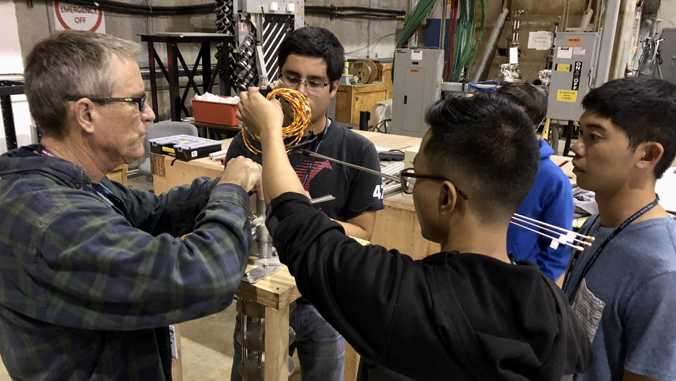
The world’s largest particle colliders rely on ultra-precise position location for particle “debris” that result from each collision of high energy protons in the center of their detectors. Positions are measured precisely in 3D, however, in recent years particle physicists have been investigating what is being called the “timing frontier”—the problem of adding precise time measurements to the 3D information, creating 4D tracking of the particle collision.
Professor of physics Peter Gorham at the University of Hawaiʻi at Mānoa Department of Physics and Astronomy has been one of the particle physicists working on the timing frontier. His work was recently awarded a three-year grant from the U.S. Department of Energy for $350,000 to further develop instrumentation for picosecond (one one trillionth of a second) timing of particle collisions.
As particle physicists look to future colliders with much higher energies, they are realizing that 3D information will not be enough to deal with the vast increase of secondary particles produced in higher energy colliders. Until recently, 3D position information has been adequate to determine the necessary information about the collision.
“In three dimensions, we can pin the track of a secondary charged particle to fractions of a millimeter, but for many years our timing precision on these tracks has been a hundred times worse than this, in terms of the light-travel time of the particle,” Gorham said.
- Related UH News story: UH professor’s Antarctica discovery may herald new model of physics, December 10, 2018
The 4D tracking methods involve an approach never before used in particle physics detectors. The method uses microwave waveguides, filled with a ceramic material that is chemically identical to sapphire, to generate a short pulse of microwaves that occur when the particles pass through the filled waveguide, creating an electromagnetic shockwave known as coherent Cherenkov radiation. The pulse propagates to the end of the waveguide and is then amplified. The waveform is recorded by digital converters.
“To get equivalent resolution in the fourth dimension, we need to resolve the particle tracks down to the picosecond level,” said Gorham. “We have now developed the only technology that has gotten close to this, down to around 2 picoseconds. With this new grant, we hope to push that well below a picosecond. This will allow us to keep ourselves on the leading edge of this new timing frontier in high energy physics.”
—By Sarah Hendrix

